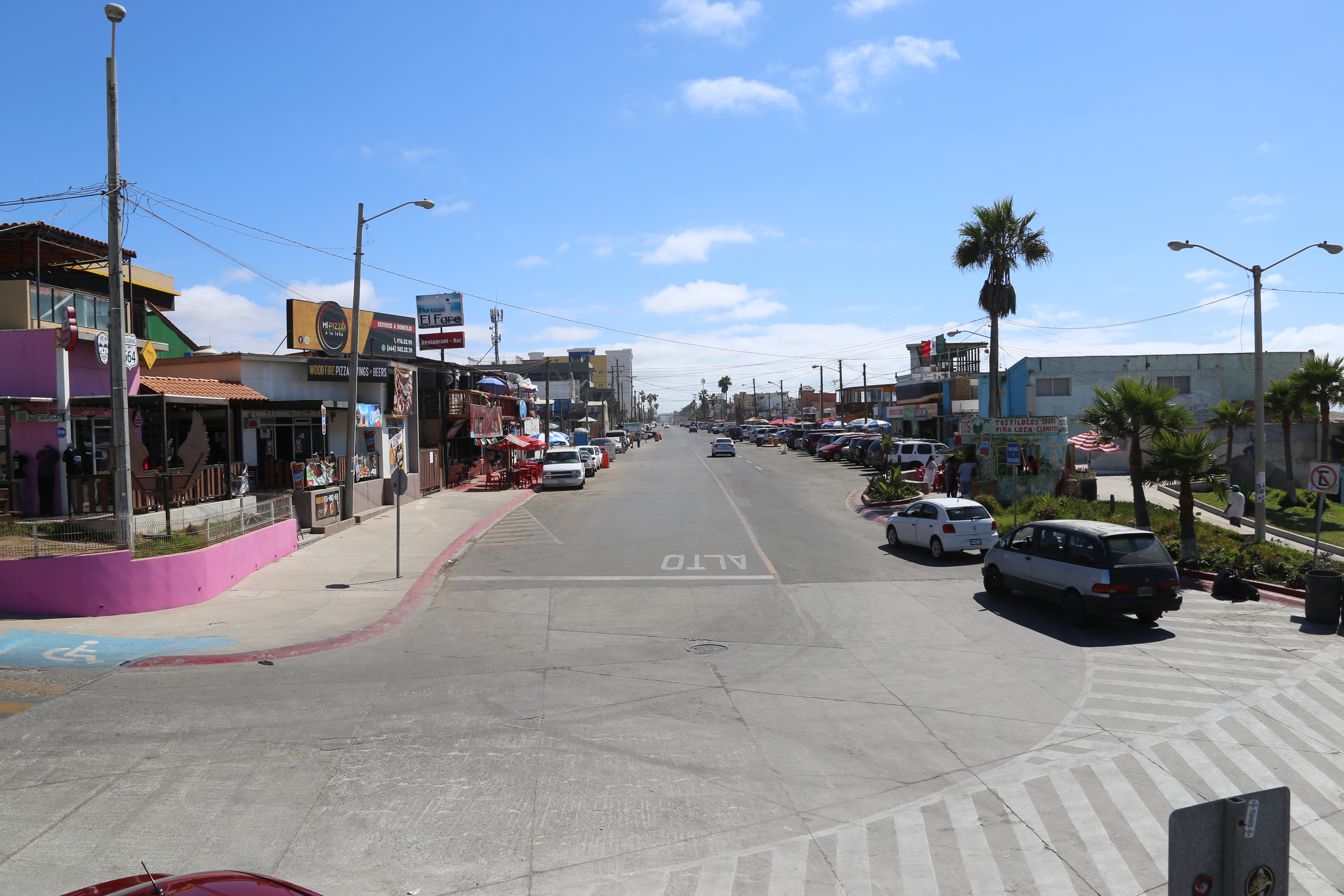Border Crisis: Seventh in a series
The adjoining cities of San Diego, California, and Tijuana, Baja California, are intricately connected by a shared geography and history as well as the bustling trade, traffic and kinfolk daily crossing the international border between the United States and Mexico.
Though geographically connected they are very different. A tour of the downtown areas of both cities provides sharp contrasts.
San Diego’s downtown and waterfront communities are safe, walkable, well-manicured and adorned with five-star restaurants, attractions and expensive homes. Banners announce outdoor sporting events and concerts at the picturesque waterfront parks where people walk leashed dogs and pop into pet-friendly shops. A sense of history, calm and affluence exists in San Diego along with an appealing blend of the old and the new.
Tijuana on the other hand appears to be in a perpetual state of construction. The city’s downtown is a gritty mix of new hotel and shopping districts featuring American franchises as you navigate here, brightly painted one-story mom-and-pop shops, street taco vendors and steel-gated concrete homes abutting ramshackle shacks constructed of wood pallets and roofed with plastic sheeting. No personal space can be found in this densely populated town where unleashed but well-fed neighborhood dogs wander the streets.
Despite their differences the cities depend on each other.
San Diego relies on green card-holding immigrants to provide workers for the thriving businesses and industries in the glittering, upscale city of 3.5 million on California’s coast.
Tijuana depends on the income its residents earn from U.S.-based jobs — salaries that far outstrip the earning power of employment in the hardscrabble city of 1.6 million.
Shared benefits accrue from the location of many U.S.-owned businesses in Mexico where labor is cheaper and regulations more relaxed. Certain lanes and passes allow for a relatively free exchange of authorized vehicles commuting between the cities.
With more than 50 million people crossing the border each year San Diego-Tijuana is one of the world’s busiest land-border crossings and the fourth-largest binational metropolitan area in the world with a combined population of more than 5 million.
As such San Diego-Tijuana now sits at the epicenter of the current immigration debate.
According to a March report issued by the American Bar Association, “The immigration courts are facing an existential crisis. The current system is irredeemably dysfunctional and on the brink of collapse.”
At the end of 2010 the backlog of federal immigration cases stood at nearly 262,000. By early 2017 that number had more than doubled. As of the end of August the backlog stood at more than 1 million with more than 300,000 pending cases yet to be placed on the dockets.
Trying to catch up
Understaffed courts are attempting to catch up in the midst of rapidly accelerating caseloads especially since the implementation of recent immigration policies.
The great majority of illegal immigrants in the U.S. actually entered the country legally, usually on an airplane, and simply overstayed their visas. Some 44% of those cases are closed when the immigrant fails to show up for his or her immigration court date.
Less numerous but garnering far more headlines are the migrants who cross the border illegally and request asylum. According to U.S. law, immigrants requesting asylum — whether crossing the border legally or illegally — must be heard in immigration court and convince a judge they have a credible fear of harm in their home country.
The San Diego immigration court is overwhelmed, even more so since the “Remain in Mexico” program — formally known as the Migrant Protection Protocols, or MPP — was implemented at the beginning of 2019.
MPP requires all asylum-seekers who entered the United States via the California border to be deported back to Mexico until their next court date in San Diego.
Limited resources
Such forces have combined to strain limited resources and create a “humanitarian crisis” across the border in Tijuana, according to the San Diego Southern Baptist Association, which estimates approximately 40,000 men, women and children are waiting there for their U.S. immigration court date.
In a recent interview with The Alabama Baptist an immigration official working for the Mexico government in the MPP program grew emotional when discussing the fate of the migrants she encounters daily.
“It is very difficult,” said the Mexican border agent, who asked that her name not be used. “I feel that their hearts are broken.”
Working exclusively with non-Mexican deportees who largely come from Central and South American countries, the agent and four others have seen some 17,600 individuals — or nearly 2,300 families — since the MPP program began.
Since MPP started in January this immigration agent’s job is to provide the adults with permits allowing them to work and live anywhere in Mexico up to 180 days while awaiting the immigration court date.
A long wait
Although the agent we spoke with works with people who are supposed to be Spanish speaking, she often encounters indigenous people who speak only a Maya dialect making it difficult for them to find jobs.
So far this year pending cases have been waiting in U.S. immigration courts an average of 696 days, according to a study by Syracuse University. Some immigrants go home and return for the court date. But many have no safe place to return to, have spent all their resources just trying to get to the U.S. or have been swindled out of all their money by unscrupulous people promising to help them.
For those people, the agent said, “We try to find shelters that are already established. We connect them with medical help if needed and pregnant women are prioritized.”
For such assistance this agent and many like her rely on the faith community, which provides food, shelter and a place to get clean as migrants wait the long months to plead their case for legal entry into the U.S. (Martha Simmons)






Share with others: